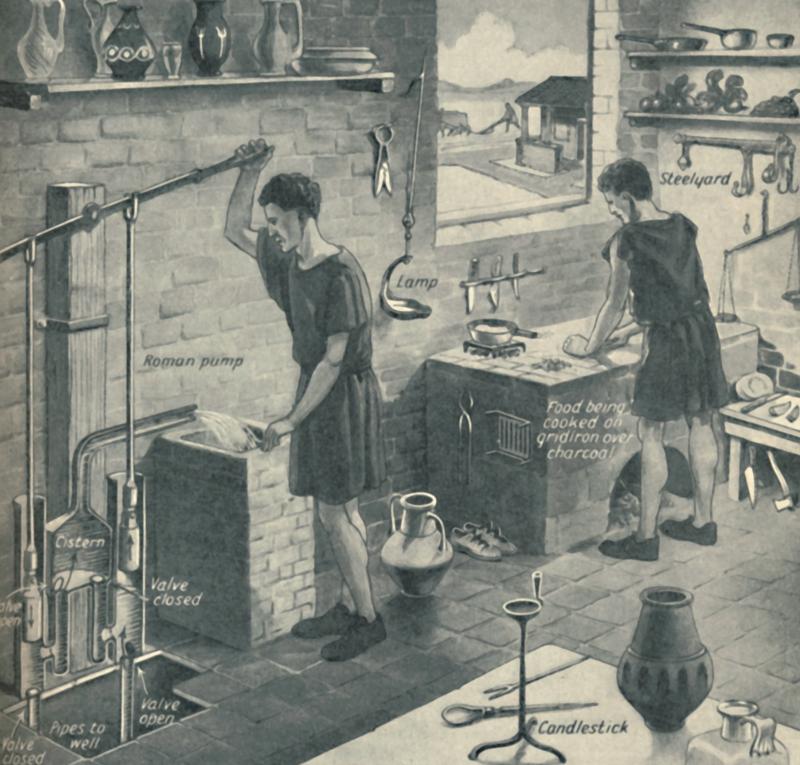
One of the most remarkable aspects of being an ancient Roman time-traveller to contemporary 2020 would be discovering that much of the food consumed 2,000 years ago remains essentially the same today. Despite some exotic tendencies, the Romans ate roughly 85 percent of the foodstuffs we now consume. A piece of cheesecake in Starbucks would be recognisable to our Roman ancestor as libum. Were they to venture into a McDonald’s, if they could get past the technology, an isicia omentata (hamburger) would be their all-too-familiar lunch.
Despite some exotic tendencies, the Romans ate roughly 85 percent of the foodstuffs we now consume
We know this from consulting the Apicius de re Coquinaria, often referred to as the world’s first cookbook, a compendious volume of Roman culinary recipes assembled by Marcus Gavius Apicius in the first century CE. A mix of scientist, educator and gastronomist, Apicius lived in the times of Roman leaders Augustus and Tiberius; he was the official cook for the latter. At that juncture, the Roman Empire had reached its highest point, when the seeds of decline, though in the ground, were not yet apparent.
ALSO READ: Plant-based meats' popularity takes root in China
Apicius’s tome sets the tone for all cookbooks that followed it. He collated his findings across numerous chapters under headings including The Careful Housekeeper; The Meat Mincer; The Gardener; Vegetables – Pulse, Legumes; Birds, Poultry; The Quadruped – Four- Legged Animals; The Sea – Seafood; and The Fisherman.
There were, of course, numerous ingredients commonly used during the period. Ubiquitous across Roman cuisine, used both in cooking processes and as a condiment, was a seasoning known as garum. It consisted of fish juice made by fermenting fish guts, heads, and tails in large amounts of salt for several days outside in the sun. (Fish sauce would be today’s equivalent.) The garum was served in different ways depending on which fish the oils had been sourced from, though the most popular were bluefin tuna and mackerel.
Spices were used, but only consumed by the richest Romans; these included pepper, myrtle, cumin, coriander, celery, fennel, dill, caraway, sesame and mustard. Herbs were prominent, notably lovage, which was widespread in Roman cuisine and today would probably be approximated to parsley. Also common were a species of wild mint, pennyroyal (not unlike modern peppermint), thyme, oregano and dill.
Time-travel back to ancient days and ways, and sample a selection of Roman staples you can still create and enjoy today.
RECIPES
Hypotrimma Salad (serves six)
Preparation time: 5 minutes
– Assortment of salad greens
– 100g unsalted farm cheese
– 2 tbsp honey
– 100ml vinegar
– 1 cup garum (fish sauce) 50ml olive oil
– 100ml defritum (substitute port or Malaga wine)
– 100ml dry white wine
– 2 pinches pepper
– 1 cup dry lovage (can substitute parsley)
– 3 tbsp dry mint
– 2 tbsp pine nuts
– 1 tbsp raisins
– 12 dates
Cut the mint and lovage. In a salad bowl, crush the cheese, incorporate the honey, and add the vinegar, garum, olive oil, white wine and port. Mix well. Add the mint, crushed lovage and pepper. Blend the resultant mixture with the salad greens. Season and garnish with pine nuts, raisins and dates cut into strips. Serve chilled.
Eggs & Honey (serves two)
Preparation time: 5 minutes
– 4 eggs
– 250ml milk
– 25g butter
– 1 tbsp olive oil
– 3 tbsp honey
– Black pepper
Beat the eggs with the milk and butter. Heat a pan with olive oil and add the mixture. Whisk with a fork until it begins to take shape and then flip it to cook the other side. Fold in half and plate. Warm the honey and pour over the omelette, then cut into thick slices. Sprinkle with black pepper and serve.
READ MORE: Music-loving farmer on the right note with eggs
Melon & Watermelon with Pepper (serves six)
Preparation time: 5 minutes
– 1 melon
– 1⁄2 watermelon
– 1 cup honey
– 2 pinches freshly ground pepper
– 1 tsp dry pennyroyal (a kind of peppermint)
– 1 tbsp passum (a sweet raisin wine; substitute vin jaune (“yellow wine”) from Arbois)
Pile up the peppermint. Cut the melon and watermelon into large cubes. Mix the melons with the honey, pepper, vinegar, pennyroyal and vin jaune. Serve very chilled.


